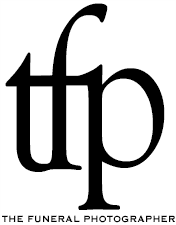Why I don’t brand my keepsake books
Keepsake books contain photos, family histories, poems, eulogies, family trees and anything else from a loved one’s life.
When I began funeral photography, I included a keepsake book as part of my service because I wanted to present my work in a dignified way and I wanted my clients to have something that was long-lasting and had meaning for them. The thought of handing over a USB (or CD as it was back in 2007) lacked gravitas and a burden for clients who would then have to print photos and find somewhere to store them. I also thought eulogies deserved to be permanently preserved since so often they are an invaluable account of family history.
Because I was pioneering a new chapter in family photography where there were no one had any expectations, I had the advantage of being able to set the rules. I invited clients to collaborate on their keepsake book saying it was their book, not mine, so they could include whatever they wanted. I haven’t changed my attitude and to this day I don’t place my brand on the book covers as I feel the book should in no way be about me.
So after the funeral, when the client is ready, their keepsake book progresses. Whilst I provide all photos within days of the funeral it can be many weeks or months before the client is ready to think about choosing content for the book. I’ve learnt that this delay has meant the book, for some clients, becomes a practical form of grief therapy: whilst friends and family have “got on” with their lives in the intervening period, working on the book allows them to work through their ever-present grief and their feelings of loss.
I have found that my books can become an integral part in the healing process of mourning. For some clients, the discussion about what images to put into the book gives them permission to express their sorrow. Other clients reflect on their loss when they revisit the funeral via the photos. For many clients, spending time authoring the book is a way of honouring the loved one —and for friends and family the book can give them something practical to do and avoid awkward silences or clumsy words: by emailing copies of the tributes they gave at the funeral or by supplying photos of the loved one’s life they are acknowledging the death and that’s important for someone who dreads the thought that they are mourning alone. In other words, authoring the book can be healing as it can keep alive the memory of a loved one.
In recent years I have met other funeral photographers who offer keepsake books, one in England, the other in the USA. Neither collaborate with clients when designing the books. I think they worry about clients making too many demands or maybe they think they know best. I have learned, on the contrary, that clients become active and useful participants and the keepsake books are all the better for their involvement.
I recently helped a widow author a book for her husband. In doing so, I learnt that her two young children had both written a letter to him on the night of his death and I suggested that the book contain these letters. The widow loved this letter and the book progressed. Initially, she wanted the book’s back cover to be a recipe that her husband loved to cook for the children but then she decided she wanted a beautiful photo taken of her and him when they were on holidays so she came over to give me the image to scan. She talked about the photo and what it meant to her and I suggested that, like her children, she might want to write a letter. Two weeks later, she delivered the letter to me. She said it had been so hard to write, that she had sobbed constantly whilst composing it, but when the four-page letter was finished, she felt such relief. Her letter is now in the book but I haven’t seen her reaction to it: when she came to collect the finished book, she didn’t want to review it in my presence. It had become hers to do with as she saw fit and when she was ready.

